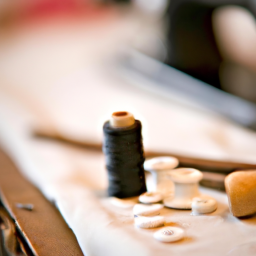
History of Sewing Darts
Sewing darts is an essential technique used in garment construction to provide shape and fit. Invented centuries ago, this simple yet effective method revolutionized the way clothing was tailored, allowing for more flattering and form-fitting garments. Let’s explore the intriguing history of sewing darts and how they became a fundamental part of garment making.
The origins of sewing darts can be traced back to Ancient Greece and Rome. During that time, garments were primarily draped and pinned onto the body, rather than tailored. However, as people began to experiment with different clothing styles, the need for a more structured and fitted silhouette became apparent.
It was during the Renaissance period in Europe that tailoring techniques started to develop. Sewing darts became a crucial method to shape garments to fit the body. Initially, artisans used small pleats or gathers to create the desired shape, but this resulted in excess bulk and a lack of clean lines in the finished product.
The breakthrough came in the 19th century when the concept of the modern dart was introduced. The term “dart” was derived from the heart-shaped playing dart used in games during that time. This new technique involved stitching triangular fabric sections into the fabric to create a more precise and controlled fit.
With the emergence of industrial sewing machines in the mid-19th century, the process of sewing darts became faster and more efficient. This allowed for mass production of tailored garments and made them more accessible to a wider range of people.
As fashion evolved throughout the 20th century, designers started using darts not only for fit but also as a creative element. Darts were strategically placed to create unique and sculptural designs, adding dimension to otherwise flat garments.
Today, sewing darts remains an essential technique in garment construction. Whether it’s a dress, blouse, or pair of pants, darts are used to shape fabric around the curves of the body, providing a flattering and comfortable fit. Modern technology has further advanced this technique, with computerized patterns and sophisticated sewing machines making the process even more precise and efficient.
In conclusion, the history of sewing darts can be traced back to ancient civilizations, but it was during the Renaissance period that the modern dart as we know it today emerged. Throughout the centuries, sewing darts has played a vital role in transforming fabric into well-fitted garments. This technique continues to be an integral part of the fashion industry, combining both form and function to create stunning and tailored clothing for all body types.




